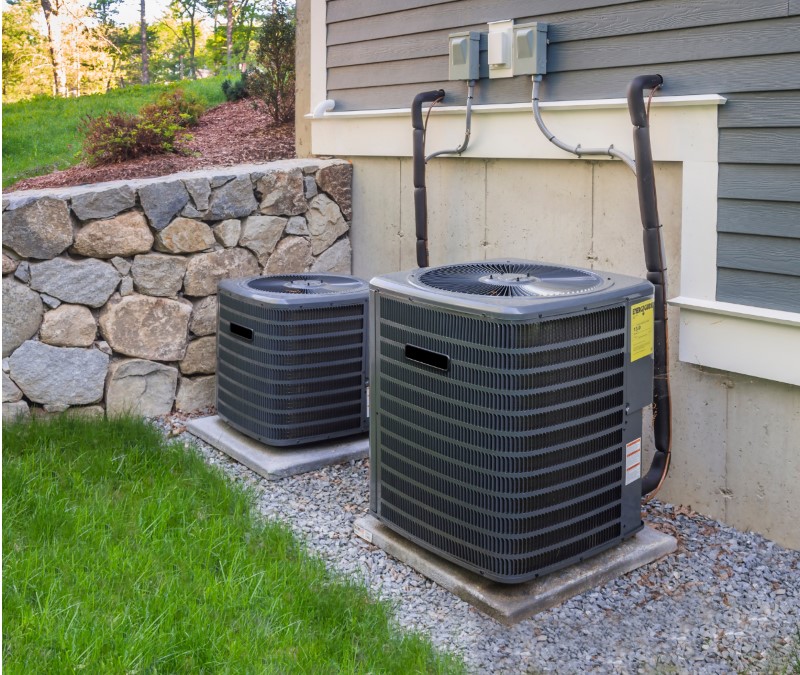 There are many people who are spending more time at home these days. As a result, it is important for everyone to take steps to try to improve their quality of life at home. This means seasonal home improvement projects. With the weather nice outside, it is a great idea for everyone to think about how they can get ready for the next season. Therefore, there are a few top seasonal Home Improvement projects everyone should keep in mind.
There are many people who are spending more time at home these days. As a result, it is important for everyone to take steps to try to improve their quality of life at home. This means seasonal home improvement projects. With the weather nice outside, it is a great idea for everyone to think about how they can get ready for the next season. Therefore, there are a few top seasonal Home Improvement projects everyone should keep in mind.
One of the first projects that everyone should work on has to do with their HVAC unit. Right now, people probably are not running their HVAC unit much right now. Therefore, this is the perfect time for everyone to make sure they get their HVAC unit maintained. That way, if there are any issues that are spotted, they can be addressed before the HVAC unit is needed.
Check The Roof And Gutters For Signs Of Issues
At the least you can fall outside, it is critical for homeowners to make sure they keep their gutters clear. Otherwise, rainwater might not be able to drain from the roof away from the house. This could contribute to roofing leaks that could wind up as expensive repair bills. For this reason, all homeowners should take the time to check their shingles, their flashing, their edging, and their gutters. This will make sure the house stays safe when the weather turns down.
Look For Entry Points For Any Pests
Finally, homeowners also have to make sure they are able to keep any potential infestations away from their homes. There are lots of pests that are going to try to get inside the home as the temperature starts to drop outside. This could include silverfish, ants, cockroaches, and termites. When homeowners take the time to look for these entry points ahead of time, they can prevent these infestations from taking place.
Think About Home Improvement Projects Now
These are a few of the top home improvement projects that all homeowners need to keep in mind. It is critical to take the time now to carry out these home improvement projects while the weather is nice. This can prevent problems in the future.
 When you are going through the process of looking for a new home, you are probably focused on the sticker price of that home. Even though it is important to think about your down payment, your monthly mortgage payment, and the total amount of the loan, there are other expenses that you might need to cover as well. If you do not put down enough money, there is a chance that the lender could ask you to pay for something called private mortgage insurance. What is private mortgage insurance and how much do you have to pay? There are several important points that you should keep in mind.
When you are going through the process of looking for a new home, you are probably focused on the sticker price of that home. Even though it is important to think about your down payment, your monthly mortgage payment, and the total amount of the loan, there are other expenses that you might need to cover as well. If you do not put down enough money, there is a chance that the lender could ask you to pay for something called private mortgage insurance. What is private mortgage insurance and how much do you have to pay? There are several important points that you should keep in mind. There are a lot of people who are spending more time at home these days. As the temperature starts to warm up once again, there are some homeowners who are looking for ways to upgrade the outside of their home. Even though there are some people who are looking at installing a brand new patio or deck, this can be extremely expensive. Fortunately, there are ways that homeowners can completely transform the exterior of their home without breaking the bank. Take a look at a few of the top ideas below.
There are a lot of people who are spending more time at home these days. As the temperature starts to warm up once again, there are some homeowners who are looking for ways to upgrade the outside of their home. Even though there are some people who are looking at installing a brand new patio or deck, this can be extremely expensive. Fortunately, there are ways that homeowners can completely transform the exterior of their home without breaking the bank. Take a look at a few of the top ideas below. Right now is the best time to look at refinancing your home. Even if your current mortgage is as young as a year old, you might find that a refinance is in your best interest.
Right now is the best time to look at refinancing your home. Even if your current mortgage is as young as a year old, you might find that a refinance is in your best interest. For those who are trying to buy things for their home, it is important to think carefully. Nobody wants to overpay; however, reaching for something cheap may simply end up getting replaced quickly. There are a few highlights that everyone should consider purchasing for their home in January!
For those who are trying to buy things for their home, it is important to think carefully. Nobody wants to overpay; however, reaching for something cheap may simply end up getting replaced quickly. There are a few highlights that everyone should consider purchasing for their home in January! For those who are looking for a new home, it is important to take the time to get this decision right. For a lot of people, a home is the most valuable investment they are ever going to make. As a result, it is critical to evaluate all of the options that are available. That way, everyone will get the most out of their time. What about setting a budget? How important is this and should people think about going over it?
For those who are looking for a new home, it is important to take the time to get this decision right. For a lot of people, a home is the most valuable investment they are ever going to make. As a result, it is critical to evaluate all of the options that are available. That way, everyone will get the most out of their time. What about setting a budget? How important is this and should people think about going over it?